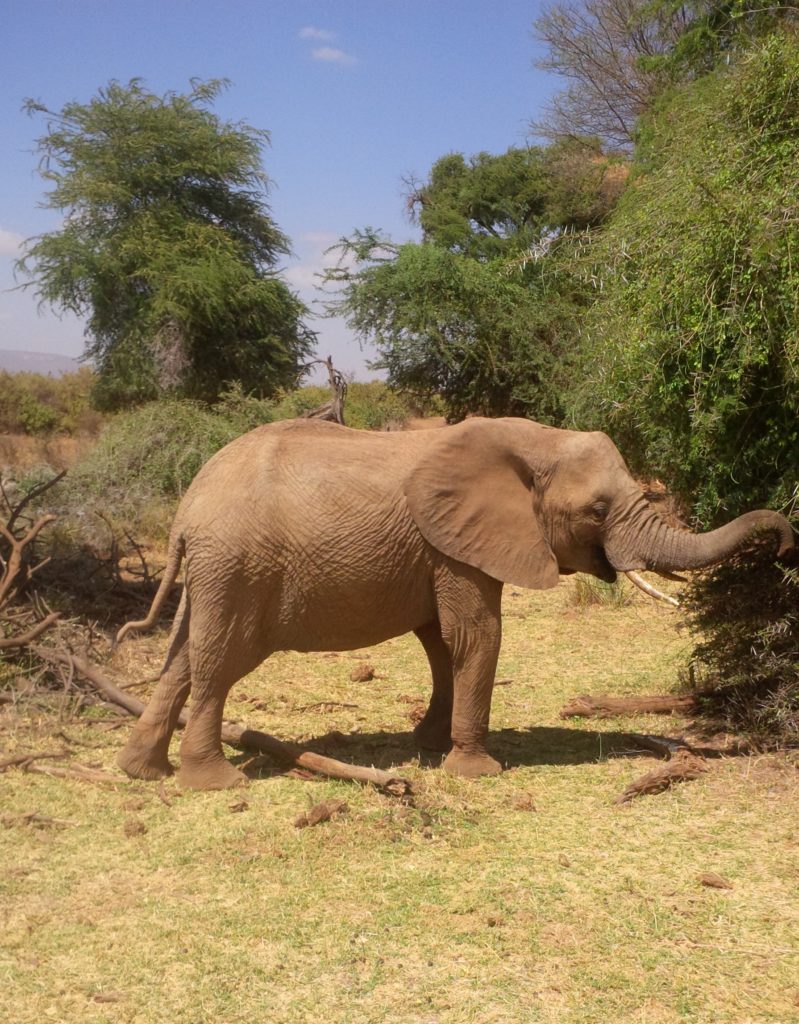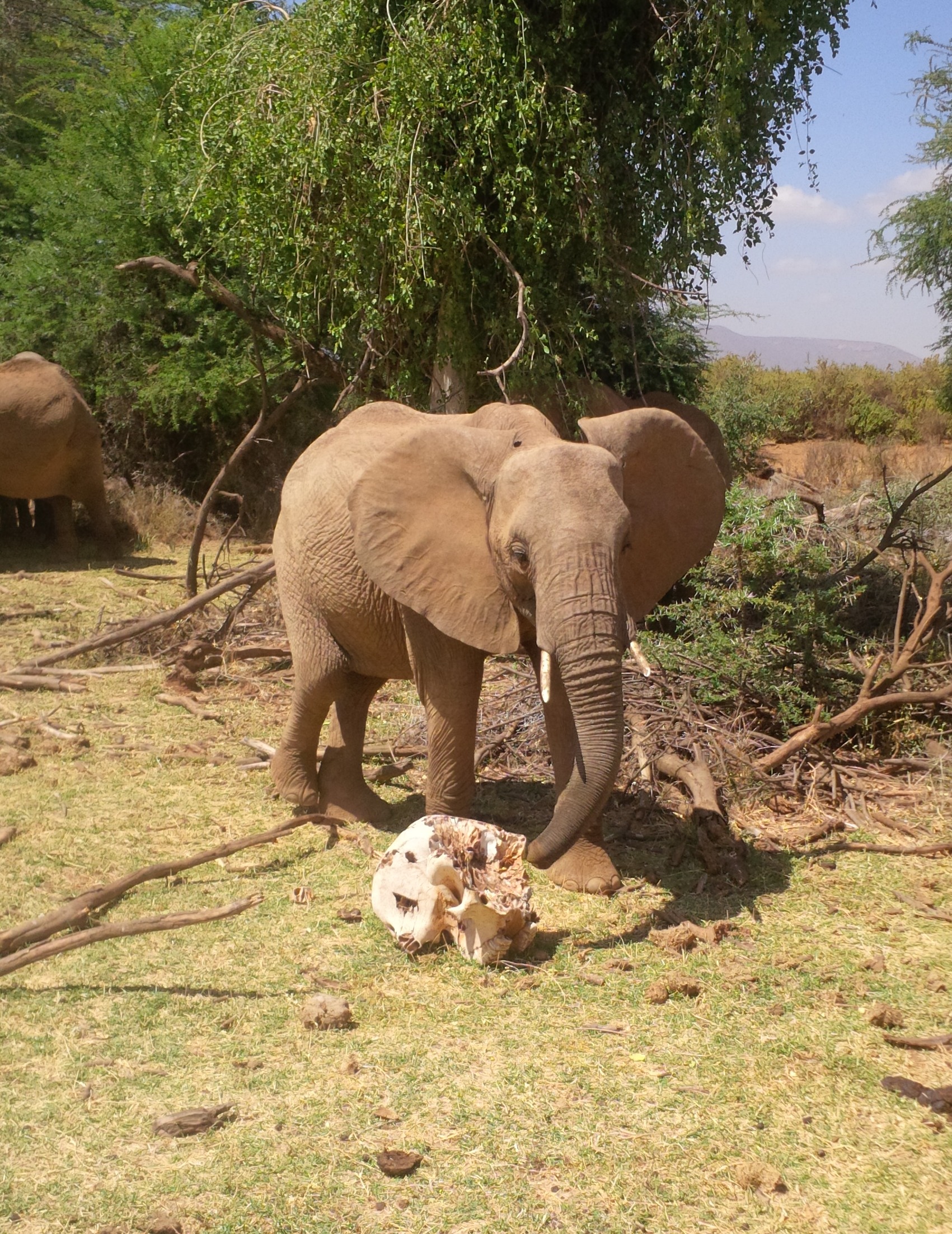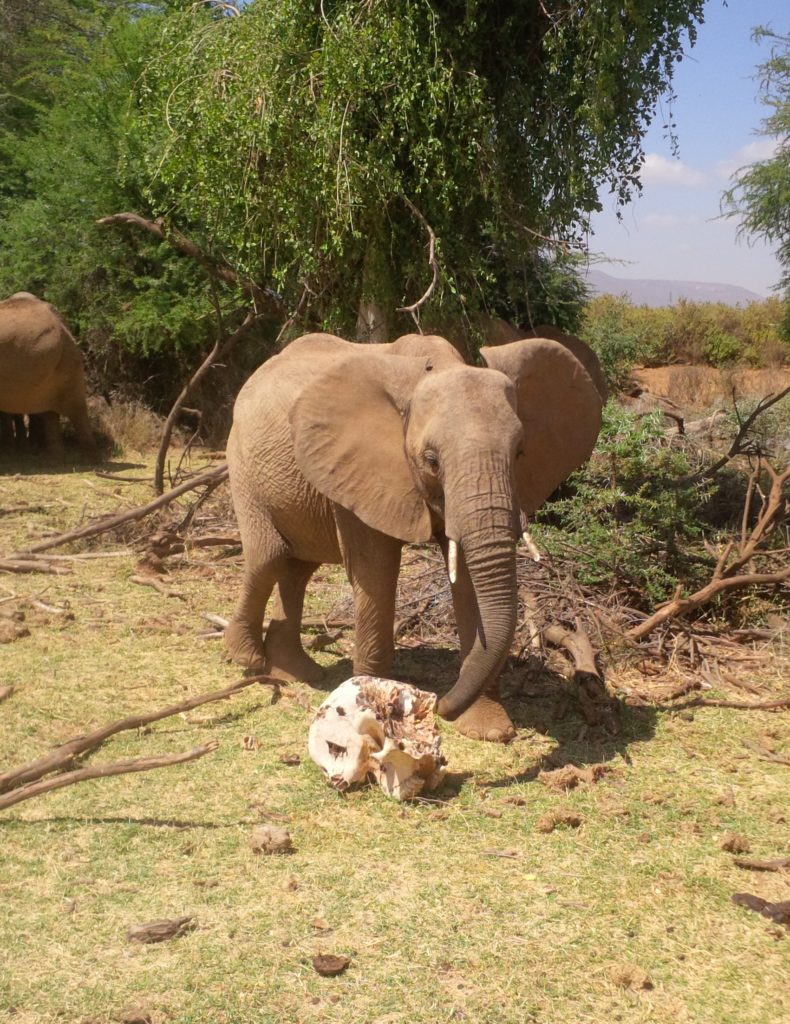By Albert Mwangeka.
An elephant stops, trumpets and makes a growling noise, almost scaring passengers in a jeep. She is playing around with the skull of a dead elephant.
May be it was a loved one, a friend , a relative or even an aunt.Who knows?
Elephants are known to be one of the most intelligent animals around.
Many more jumbos flock towards the remains of their ‘friend’ and continue stroking its skull with their trunks.
It was quite an emotional scene as we sat in the jeep in the middle of the thick riverine forests of the Samburu National Reserve as the tour guide told us that just like humans, elephants also mourn their dead.
”Elephants are intelligent beings just like humans. They mourn their loved ones. They have a great memory and can remember what happened to their peers. This one was killed by a poacher. Playing with the remains of their dead is a way of saying hi ,” says David Letitia,a Research Assistant , Save the Elephants Organization.
As the guide drives out of the reserve the awe and intense emotions could be seen in many of the passengers’ faces because of the ritual that was just witnessed.
It is further revealed that Samburu people hold high respect for this large terrestrial mammal as it is a custom they have consistently followed from their forefathers.
They think the elephant has human qualities unlike other creatures; a belief passed to them for generations by their forefathers.
‘Most of the time these animals will gather at the grave of their loved one.When they do that growl and grant while playing the bones of their dead. It is a way of remembering the life of their fellow.This set up is similar to that of humans and that is why we think the elephant is closely related to the human being,’ narrates Peter Leshakwet, County Executive Ministry of Tourism and Enterprise Development , Samburu County.
Dickens Lekurayo who says he has lived in the West Gate area of Samburu for 20 years says that whenever the Samburu people meet an elephant skull they have to put tree branches on the skull to pay tribute to the animal.

“We found our forefathers doing this and we have emulated this from them,” He continues.
“As another sign of respect we pour milk on their remains,” adds Leshakwet.
Trezer Oguda , from Save the Elephants explains that jumbos walk in families; a sign that they possess human qualities.
“They are headed by females who are known as matriarchs. Males who reach 13 years are expelled from the herd to fend for themselves,”she says.
“Many people do not know this but the position of the elphant’s mammary glands is similar to that of humans, “adds Leshakwet.
Samburu community like any other tribe, are divided into clans and these clans have distinctive names.
This community has mainly associated the clans with various animals like hyenas, snakes and most notable the elephant.
The people here say that those who belong to the elephant clan can control an elephant who invades into the human neighborhood.
Members of this clan throw some sand to the elephant and spit a little bit to send the jumbo away.
“Someone from the elephant clan can ‘send’ the creature to trample on an enemy. It sounds ridiculous but it has happened before. The person will tell the enemy that he going to send his brother the elephant to kill his foe. It sounds ridiculous but it has happened before. I am from that clan,’’ says Leshakwet.
Stories have been told by Samburu elders to their offsprings explaining how the elephant was once a human.
“Oh, yes. The elephant used to be one of us. He was a helper of the woman. His household chores used to be fetching water and firewood. You know the elephant is very strong and one day he brought very large chunks of wood without chopping them. The woman was furious because she could not cook using large chunks of wood. She then banished her helper to the forest. Before leaving for the forest the elephant pulled out two black skins from the house put it on his head, and they became his ears,” explains Lekurayo.
Leshakwet says that the skins were used in building Samburu homesteads and the builders ensured that they were as dark as an elephant’s skin.
“Wherever elephants live the Samburu people live. We cannot be enemies because he does not kill what we eat .He used to be a human being.”Concludes 54 year old Kiripis Nyambara.
Though elephant hunting has been banned of over 40-year period in Kenya, poaching has not reduced. Given the poverty of many of the people, and the high value of elephant tusks, they are shipped overseas and sold on the black market. Although Kenya has many national parks and reserves protecting wildlife, elephant populations are still at risk, a problem which is made worse by corruption and some officials supplementing their income with permitting poaching.















